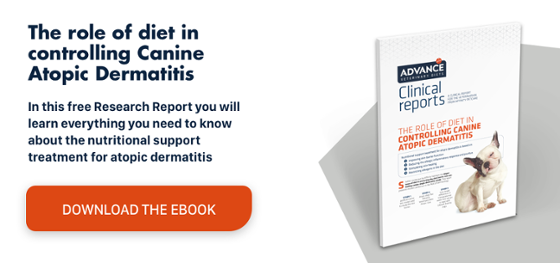Three clinical cases in dermatology (Dr Lluís Ferrer): demodicosis, atopic dermatitis and genetics
These examine some clinical cases about common diseases, with a focus on their treatment. The first one is about atopic dermatitis, the leading diagnosis in clinical dermatology. The second discusses demodicosis and the final one, genetics.
Clinical cases in dermatology: atopic dermatitis
Here we review the case of a Maltese terrier with chronic atopic dermatitis. Atopic dermatitis is the most frequent diagnosis in canine dermatology.
This castrated Maltese female, aged 10, was first diagnosed with atopic dermatitis at the age of 2. She has undergone numerous treatments:
- Antibiotics for secondary infections
- Fluoxetine for separation anxiety
- Immunotherapy, unsuccessful
- Corticosteroids, with good clinical response but also with secondary Cushing’s disease and diabetes
- Antihistamines, with poor response
- Cyclosporine, which caused severe diarrhoea
The disease manifested with the dog chewing its paws. The patient also has chronic otitis and scratches. She is a fussy eater, with a poor response to a hydrolysed protein diet.
The following were tried:
- Oclacitinib: 5.4 mg/12 h for 2 weeks, then 5.4 mg/24 h
- Amitriptyline 10 mg/12 h (anxiolytic and antipruritic)
- Two chlorhexidine baths per week
The dogs responded well, but she started scratching upon reducing the dose of oclacitinib. Administration as a single daily dose does not cover a 24 hour period in 30% of animals.
Treatment was optimised with a change to a restricted antigen diet. This is because some dogs have food allergies or eventually develop them.
The long-term treatment of atopic dermatitis consists of oclacitinib, cyclosporine or immunotherapy, without forgetting support in the form of diet, parasite control and baths.
Diets should be rich in essential fatty acids (omega-3 and 6), as they reduce pruritus and inflammation. It is also important to restrict antigens due to any allergies.
Clinical cases in dermatology: demodicosis
Here we present the case of a 2-year-old pit bull with no improvement of possible demodicosis after treatment with ivermectin 0.5 mg/kg/24 h and cephalexin 30 mg/kg/12 h.
A biopsy returned evidence of acantholytic cells, with no Demodex or bacteria, so the suspected diagnosis was reconsidered. The video gives a clear picture of what it was all about.
Clinical cases in dermatology: the role of genetics in dermatology
The sequencing of the canine genome, 6 years after that of the human genome, has resulted in numerous advances.
A dog’s genetic material has low variability. This is due to its domestication over 30,000 years ago, and it has been losing genetic variability ever since. In addition, many genes were lost when breeds were developed 100–150 years ago. Dogs have very large DNA fragments due to this poor genetic mixing, so their diseases occur very frequently.
Some very recent advances are dog genotyping chips, which are used to quickly identify mutations in many disease-causing genes at affordable prices.
This means that genome-wide association studies (GWAS) can be employed to associate a disease with a particular polymorphism.
One example of the importance of genetics in the field of dermatology is that of the Rhodesian Ridgeback’s crest. Its presence is due to duplication of chromosome 18, which was determined by studying just 10 examples of the breed.
The video for this case provides a full review of the main dermatological diseases in dogs with a genetic cause.


